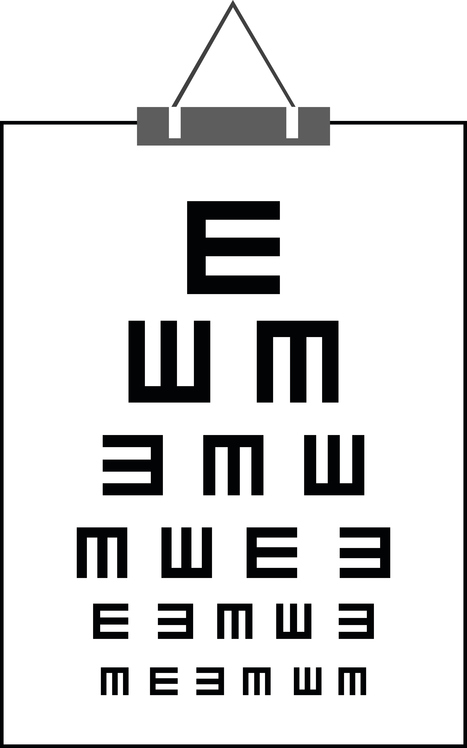- en.wikipedia.org
- en.wikipedia.org
- cdc.gov - Common Eye Disorders and Diseases
- who.int - Blindness and vision impairment
- my.clevelandclinic.org - Eye Disease: Inherited & Genetic
Blindness: what types do we know and what does partial, practical mean?

Sight is one of the most important senses. Its loss leads to a condition called blindness, which can be total or partial. The cause can be disease, injury or a genetic defect.
Frequently asked questions:
What is blindness a symptom of?
What are the types and what does the term practical blindness mean?
What symptoms can a person experience in the beginning and what should be watched out for?
How is it treated?
What are the different types?
Blindness can be congenital or acquired.
It is also partial or total. In partial blindness, there is a reduction in visual ability. This type of blindness is also referred to as practical blindness.
In the complete form of blindness, the ability to perceive with the eyes is absent.
Symptom of blindness
Blindness is a symptom that results from a disease of the eye. It may be nervous, vascular or other in nature. Alternatively, it may be a problem directly in the brain. It is very important to seek medical treatment as soon as possible after the onset of blindness.
The advantage of eye diseases is their easy diagnosis and good success rate of treatment. This is especially true in developed countries where the level of health care is high.
In developing countries, the situation is different. The main reason is economic inaccessibility. Subsequently, poorer availability and access to medical care. Consequently, there is a high percentage of unjustified sickness.
An estimated 40 million people suffer from blindness. Of these, 70-80% have a chance of a partial or complete cure.
A person may experience symptoms in the beginning such as:
- a gradual deterioration of vision and a reduction in visual acuity, near or far
- Gradual blurring and greying of the image, blurring
- impaired vision during twilight and dusk
- visual field blurring, blurred images or dark spots
- flickering in the field of vision
- impaired colour recognition
Age, degeneration and genetics

Old age is one of the causes of visual impairment. In the worst cases, there is a complete loss of the ability to see. One example is degenerative macular disease.
Albinism is a common cause of visual impairment. Most often, partial, i.e. practical, blindness is present. However, there are also cases of total blindness.
Blindness and trauma
Even with various accidents and injuries, a person is at risk of blindness. Blindness due to accident mainly includes injuries to the eye itself. Other causes include injuries to the head, brain.
There may be various damages to the optic nerve, the optic pathway or directly to the visual centre in the brain lobe. Often there is a loss of vision due to bleeding in the brain or its inflammation.
Inflammation as a cause
Blindness can be permanent or temporary. It can affect one or both eyes. For example, when a nerve, specifically the optic nerve, is inflamed, temporary loss of vision can occur. If the inflammation is left untreated, there is a risk of permanent loss of vision.
Sometimes there are also problems with blurred vision or loss of colour vision. Pain when moving the eye is also a classic symptom. Such blindness is caused by inflammation of the optic nerve, which transmits visual sensations from the eye to the brain.
You may have heard of the term snow blindness. It is caused by inflammation of the cornea of the eye. Unprotected vision is exposed to an excessive dose of sunlight. Again, proper treatment is important.
Diabetes to blindness

Diabetic retinopathy occurs in people with diabetes. It involves pathological changes in the retina and blood vessels. Damage to the blood vessels supplying the eye results in visual impairment and even complete blindness.
Sometimes, however, the disease can also be associated with high blood pressure or inflammation of the blood vessels. It can be either just a disruption of the retinal blood vessels or a direct disruption of the retina. The disease is one of the vascular diseases of the retina. It first manifests itself in visual impairment or visual field disturbances, but with complications, blindness can occur.
Amaurosis, the technical name for blindness, can also arise from certain metabolic diseases. A good example is atherosclerosis. Here, the deposition of substances, particularly fats, in the walls of the arteries occurs. This is a long-term and degenerative process.
Problems with vision occur when atherosclerosis affects the arteries that supply the eye. Visual impairment and sometimes even blindness can also occur, for example, in polio, specifically cerebral palsy.
The nervous system and visual impairment
As far as diseases of the nervous system are concerned, many of them can also cause visual impairment. In some cases, they can even end in the affected person going blind.
Loss of vision sometimes accompanies epileptic seizures. The person then has problems with vision. There may be peripheral vision or there may be blackouts in the visual field. There may be temporary or complete loss of vision.
Blindness in one eye can also occur in stroke, which is an acute illness caused by an interruption in the supply of oxygen and blood to some part of the brain. This interruption can be caused either by a blood clot forming or by a weakened blood vessel bursting and bleeding into the brain.

Blindness in children
There are also cases with hereditary blindness. This means that the child is already born blind. Another example is when blindness arises as a result of a disease during pregnancy. For example, in the case of rubella, congenital cataracts develop. In premature babies, retinopathy of prematurity may occur.
The most common causes of blindness
The following three causes are the most common:
- cataracts.
- glaucoma
- inflammations and infections of the conjunctiva and cornea
Temporary blindness occurs, for example, when inflammation occurs directly in the eye. If left untreated, this can lead to permanent loss of vision. Corneal infections are also an example of this. In developing countries, this is one of the most common causes.
Several diseases of the cardiovascular system, such as heart defects, can also cause blindness in some cases. Therefore, this symptom should not be neglected. It is important to adhere to treatment and regular medical check-ups.
Video about visual impairment
Interesting resources
Related










